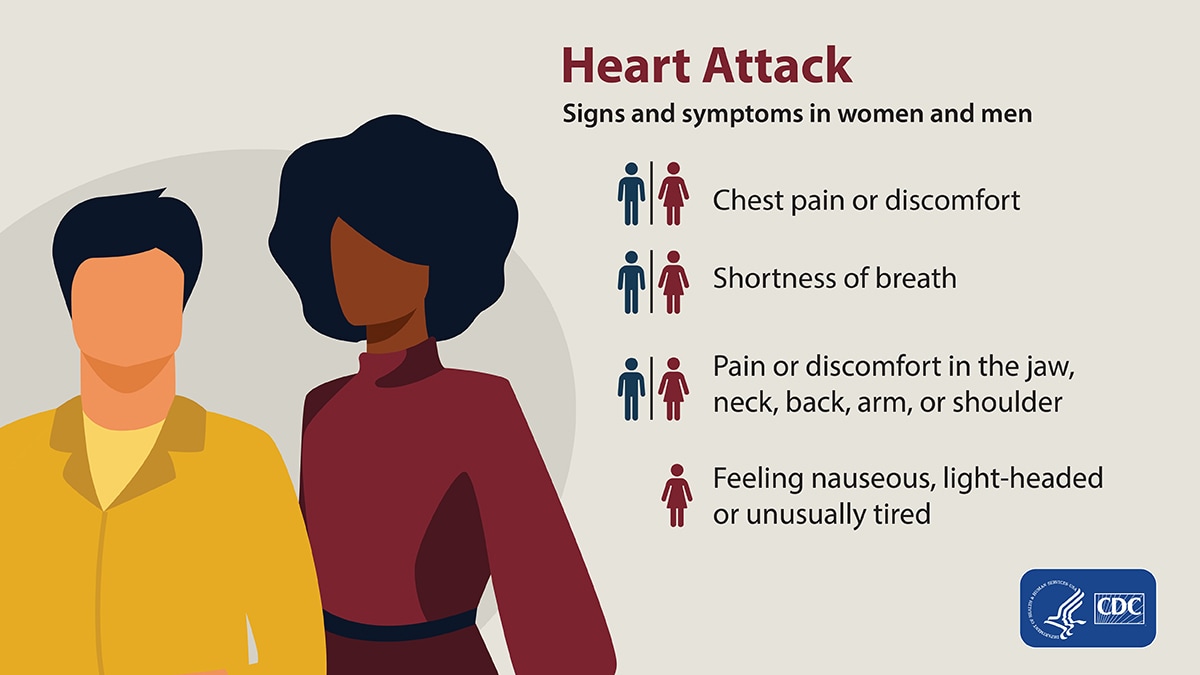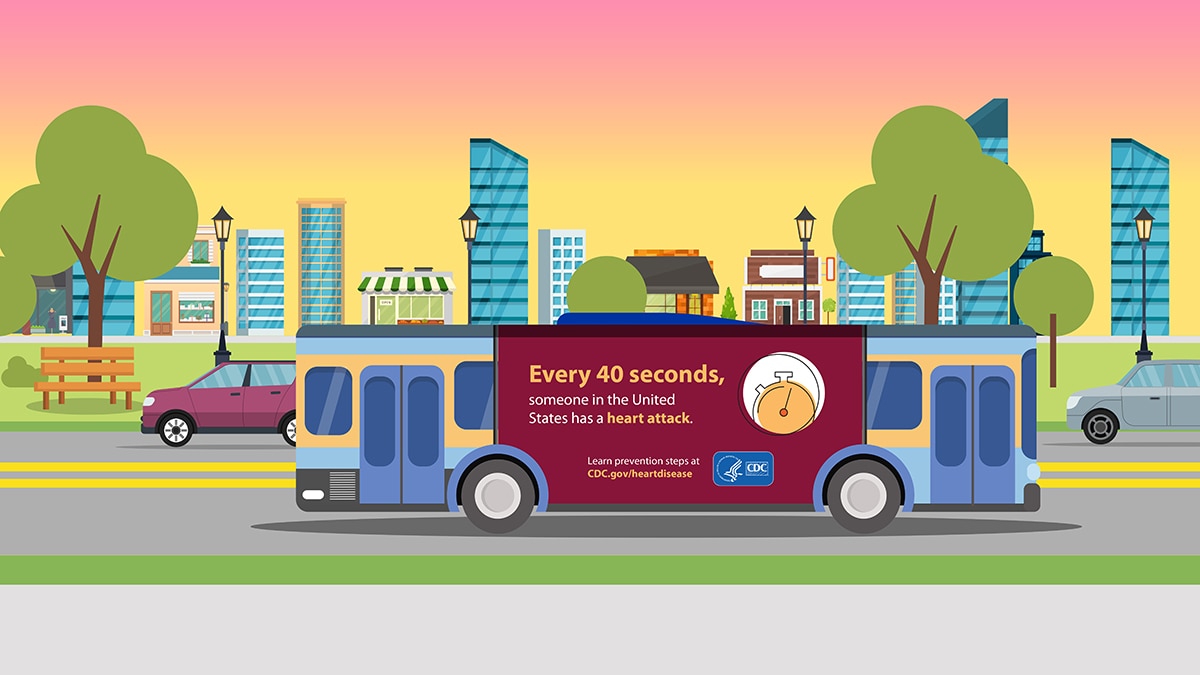
A heart attack, also called a myocardial infarction, happens when a part of the heart muscle doesn't get enough blood.
The more time that passes without treatment to restore blood flow, the greater the damage to the heart muscle.
Coronary artery disease (CAD) is the main cause of heart attack. A less common cause is a severe spasm, or sudden contraction, of a coronary artery that can stop blood flow to the heart muscle.

The major symptoms of a heart attack are:
Other symptoms of a heart attack could include unusual or unexplained tiredness and nausea or vomiting. Women are more likely to have these other symptoms. Learn more about women and heart disease.
If you notice the symptoms of a heart attack in yourself or someone else, call 9-1-1 immediately. The sooner you get to an emergency room, the sooner you can get treatment to reduce the amount of damage to the heart muscle. At the hospital, health care professionals can run tests to find out if a heart attack is happening and can decide the best treatment.
In some cases, a heart attack requires cardiopulmonary resuscitation (CPR) or an electrical shock (defibrillation) to the heart to get the heart pumping again. Bystanders trained to use CPR or a defibrillator may be able to help until emergency medical personnel arrive.
Remember, the chances of surviving a heart attack are better the sooner emergency treatment begins.
Several health conditions, your lifestyle, and your age and family history can increase your risk for heart disease and heart attack. These are called risk factors. In addition, about half of all Americans have at least one of these three key risk factors for heart disease: high blood pressure, high blood cholesterol, and smoking. 1
Some risk factors cannot be controlled, such as your age or family history. But you can take steps to lower your risk by changing the factors you can control.
Learn more about risk factors for heart disease and heart attack.
If you've had a heart attack, your heart may be damaged. This could affect your heart's rhythm and its ability to pump blood to the rest of the body. You may also be at risk for another heart attack or conditions such as stroke, kidney disorders, and peripheral arterial disease (PAD).
You can lower your chances of having future health problems following a heart attack with these steps:
Physical activity: Talk with your health care team about the things you do each day in your life and work. Your doctor may want you to limit work, travel, or sexual activity for some time after a heart attack.
Lifestyle changes: Eating a healthier diet, increasing physical activity, quitting smoking, and managing stress—in addition to taking prescribed medicines—can help improve your heart health and quality of life. Ask your health care team about attending a program called cardiac rehabilitation to help you make these lifestyle changes.
Cardiac rehabilitation: Cardiac rehabilitation is an important program for anyone recovering from a heart attack, heart failure, or other heart problem that required surgery or medical care. Cardiac rehab is a supervised program that includes:
A team of people may help you through cardiac rehab, including your health care team, exercise and nutrition specialists, physical therapists, and counselors or mental health professionals.
